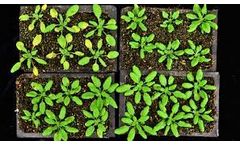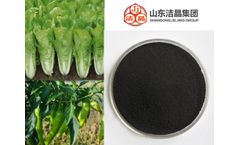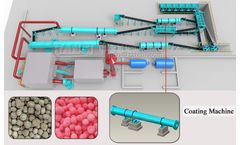Crop Resistance Articles & Analysis
18 articles found
The DNA sequence of a gene responsible for resistance to a devastating virus in wheat has been discovered, providing important clues for managing more resistant crops and maintaining a healthy food supply. Wheat crops in the Americas, Asia, Europe, and Africa are regularly damaged by wheat yellow mosaic virus (WYMV), and there ...
In a new study published in Cell, Duke University researchers have uncovered a key ingredient in plant cells that reprograms their protein-making machinery to fight disease. Crop production lost each year due to bacterial and fungal diseases amounts to 15%, or about $220 billion. ...
It has functions such as anti-oxidation, anti-bacterial, and stress resistance. It can effectively open up the transportation channel of plant nutrients in the body, improve plant resistance such as cold resistance and waterlogging resistance of crops, and improve the overall nutrient transport capacity of ...
The release rate of nutrients in fertilizers can be controlled to a certain extent for continuous absorption and utilization by crops. After the fertilizer is coated, it can reduce the loss of fertilizer nutrients, especially nitrogen, in the soil. Can reduce the frequency of fertilization, save labor and cost. To increase crop yield and income, the application ...
The fertilizer produced by bio organic fertilizer equipment can improve soil ecological environment and change soil microbial flora, and play a more important role in reducing crop diseases and insect pests. In the process of microbial growth and reproduction, it can secrete a variety of antibiotics and plant growth and elements. It can not only inhibit the activities of plant ...
The application of organic fertilizer can improve the ability of drought resistance, disease resistance and insect resistance of crops after being fully decomposed. ...
Seeds play a role in larger issues like biodiversity, farmers’ rights, control of the food system and use of agricultural chemicals, which many independent breeders try to avoid or reduce by breeding natural resistance into crops themselves. Kloppenburg emphasizes that the open-source movement is not about genetically modified organisms; patents can affect ...
ByEnsia
But it is now known Potassium also plays a significant role in helping crops resist disease and environmental stresses during winter dormancy and ensuring optimum supplies of Potassium to see crops through the winter months should not be overlooked. ...
However, few studies have addressed how the orderly arrangement of crop vegetation affects the resistance of the surface to overland flow. In the present study, we consider that flow resistance has anisotropic attributes. We have also performed a flow resistance experiment using rigid and simulated partially submerged ...
Engineered Resistance One crop genetically engineered for drought tolerance is already on the market in the United States: a corn variety called DroughtGard, created by Monsanto. ...
ByEnsia
” In its brief, NRDC notes that when EPA proposed to register Enlist Duo, it stated that no new assessment is needed for glyphosate because use of glyphosate on herbicide-resistant crops is not a new use. NRDC argues that there are many new studies concerning glyphosate’s human health effects and impacts on monarch butterflies since EPA reregistered ...
Nearly 80% of all pesticides applied to row crops are herbicides, and these applications pose potentially significant ecotoxicological risks to non‐target plants and associated pollinators. In response to the widespread occurrence of weed species resistant to glyphosate, biotechnology companies have developed crops resistant ...
Genetic diversity has supplied effective ways to improve crop yields and disease resistance. Therefore, we may be able to reduce crop uptake of heavy metals by collecting germplasm resources. ...
There are other challenges regarding the uptake of pest-resistant crops. Zeyaur Khan, a principal scientist with ICIPE, explains: "Even if you breed them, the farmers don't like the taste. ...
A vast literature has accumulated since crop varieties with transgenic resistance to insects and herbicide tolerance were released to farmers in 1996 and 1997. ...
Farmers are expected to meet the rapidly increasing demand for food, feed, fuel and fibre crops even though most land and water resources have already been committed. Consequently, crop water productivity must increase (‘more crop per drop’), partly through raising irrigation water-use efficiencies, either at the system or at the farm level. ...
This paper looks at the attempt to create a territory free of transgenic crops in the state of Rio Grande do Sul (RS) Although the state government had legal grounds under federal law and court decisions that banned these crops in Brazil, resistance by groups representing local farmers managed to disseminate the planting of transgenic soybeans in ...
Genetically Modified (GM) insect resistant (Bt) maize crops have been grown commercially in the European Union (EU) since 1998, and in 2006, there were plantings in seven EU member states. ...













